Roger's Corner
Good Times with Bad Filters
OK. First and foremost this is a fun post. It is not episode 362 of “Should you put a UV filter on your lens”. Some people use them. Some don’t. There’s not enough bandwidth to ever end that argument.
But here at Lensrentals, we have a ton of filters. We have some really good, very expensive filters. We have some OK, middle of the road filters. And because some customers, uhm, happen to return a very cheap filter in place of the one they were sent, we’ve obtained some crappy filters. Brand names aren’t necessary. If it cost $22 in 77mm size, it’s a crappy filter.
Anyway, one of the techs has to clean all those filters, make sure the threads are OK, and test them out. Honestly nobody likes to do it, so it gets put off until we need some filters or there’s just nothing else to do. So the other day Kenny is cleaning filters and testing the threads by mounting them one in front of the other until he made a nice mountain of 50 UV filters.
Not being the kind of people to let well enough alone, we decided to mount them to a 5D Mk II and 300 f4 we had handy and take a few pictures.
And of course see if the filters affected image quality. See if you can tell which images was shot with the 50 UV filters, and which without:
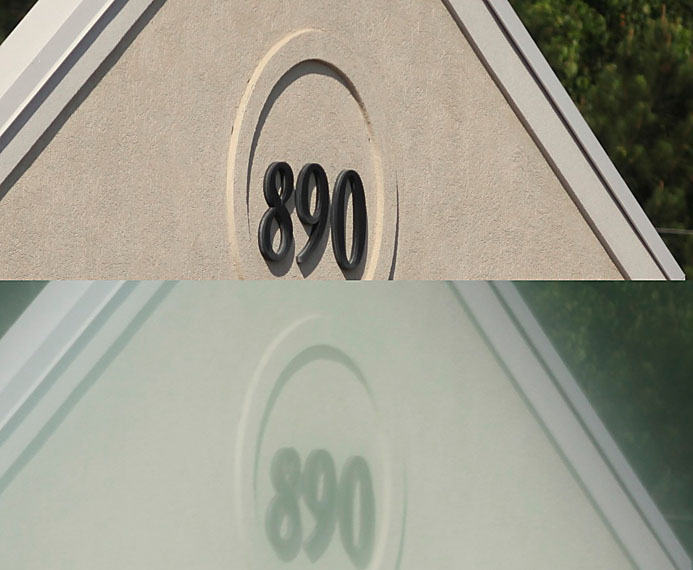
Shot of the building across the parking lot without filters (above) and with 50 UV filters (below). The one with the filters is actually better than I expected.
Of course there’s a lot of vignetting and haloing on the full size image:
Compared to no filters
Roger, do you have anything constructive to say, or are you just wasting blog space again?
Yes, actually I do. Fifty filters stacked is pretty ridiculous. But in that stack of 50 filters, as I said, there are some very good ones and some very bad ones. Lets compare a stack of each, shall we?
First, I had Kenny put the worst filters on the top of the stack (all were nonbrand, or brands we know are cheap and bad) and take a picture of the stack at an angle. All were freshly cleaned and if you look straight through them reasonably clear. Like a filter should be. But if you stack them and try to take an angled picture through several layers of them, the results were ugly.
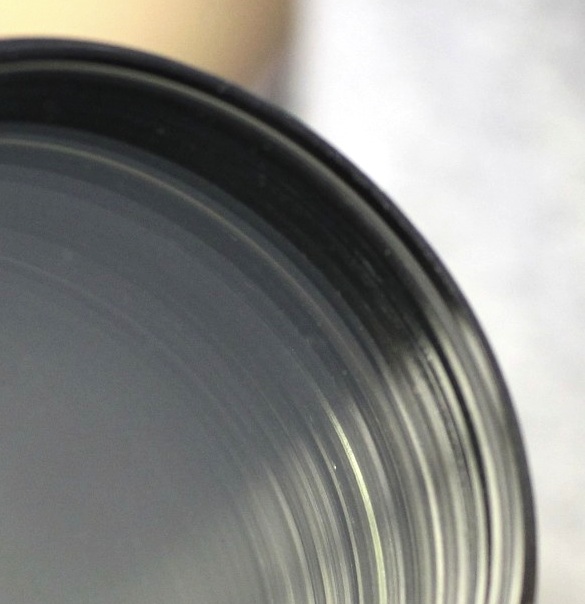
View through a half dozen cheap filters stacked on top of each other. Try counting the filter rings inside the stack.
Yes, I know they don’t look clean in the image, but every one of those filters was freshly cleaned, and checked under a light. And if you look straight through them they were pretty clear. Looking at an angle tends to show you the weaknesses of a filter much better than looking straight through it. And remember: most of the light rays coming into the lens are coming in at an angle, not heading directly to the sensor in a straight line.
Now lets compare the stack with the expensive, top of the line filters (B&W, Heliopan, etc.) stacked the same way.
Hmmm. I’m starting to think there might be a difference here. But the proof is in the pudding. Lets modify our original experiment to something only slightly ridiculous. Instead of shooting through 50 filters, lets take the shot through 5 top of the line filters and another through 5 bottom of the line filters.
Here’s a 100% crop of a bumper sticker across the parking lot shot first with no filter, second with 5 stacked high end UV filters, and then with 5 stacked low grade UV filters.
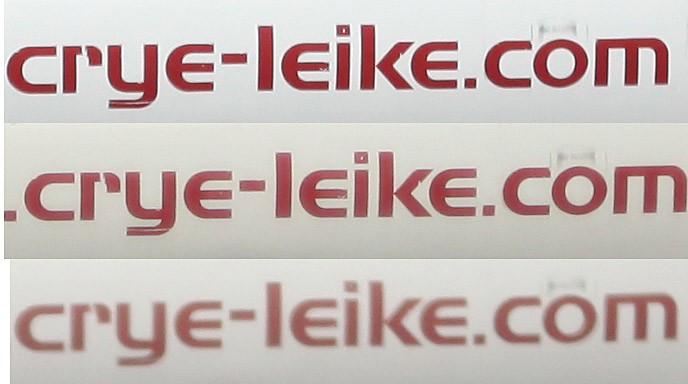
100% crops of a bumper sticker shot through no filters, 5 stacked good UV filters, and 5 stacked cheap UV filters.
Now stacking 5 filters doesn’t have a ton of real world implications. Most people rarely stack two. But it is a fun demonstration that there really is a difference between good filters and cheap filters.
The good filters do a remarkable job: 5 stacked filters means 10 air-glass interfaces before the light even gets to the lens. That there’s only a little bit of image quality loss through all those filters is pretty impressive. This crop is from the center of the image, there’s more degradation to the sides, but still, it’s an impressive performance. And certainly lends credit to the idea that a high quality, multicoated UV filter has little effect on image quality.
Five bad filters, though, is another thing entirely. I’m completely aware, for those of you who are going to feel the need to point out the obvious, that nobody shoots with 5 UV filters. And I understand that one cheap UV filter wouldn’t have nearly as bad an effect on image quality as 5 of them. But I don’t think you can disagree that the good (and expensive, I know) filters have much less effect on image quality than the cheap filters.
BTW – before anyone asks, I avoided name brands of cheaper filters for a reason: many filter manufacturers make both pretty good, and pretty bad filters. You can tell the difference by the price or by reading carefully about the number of coatings, etc. A Tihoya $29 “high quality” filter is not the same as a Tihoya $79 “Professional” filter. This wasn’t meant to be a filter review, just a fun demonstration of the obvious.
Roger Cicala
Lensrentals.com
June, 2011
Author: Roger Cicala
I’m Roger and I am the founder of Lensrentals.com. Hailed as one of the optic nerds here, I enjoy shooting collimated light through 30X microscope objectives in my spare time. When I do take real pictures I like using something different: a Medium format, or Pentax K1, or a Sony RX1R.
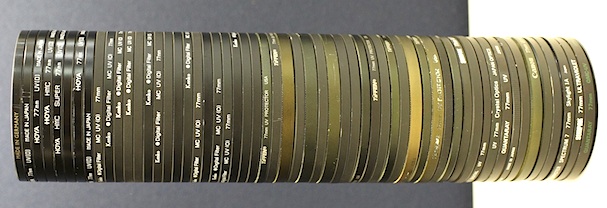


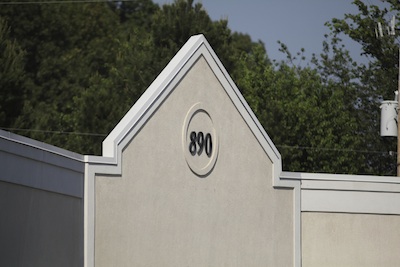


Pingback: Photographs Taken Through 50 UV Filters | hot gadget news()
Pingback: Photographs Taken Through 50 UV Filters | IsuperNews()
Pingback: Photographs Taken Through 50 UV Filters | t3knoDorKs()
Pingback: UV filter of niet - Belgiumdigital forum - Digitale fotografie()
Pingback: Photographs Taken Through 50 UV Filters | 127.0.0.1()
Pingback: Ridiculous but Fun Experiments with UV Filters()
Pingback: Photographs Taken Through 50 UV Filters @ Technology News()
Pingback: UV Filter, should I use one? | Lee Duguid Photography Blog()